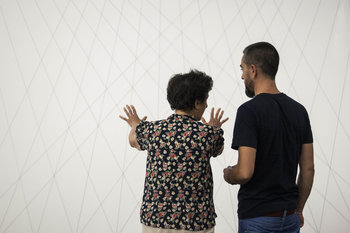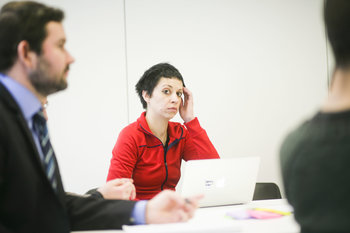

Consensus Building
A process of crafting a solution that everyone can agree upon. This often requires a great deal of compromise and tends to produce suboptimal decisions. Nevertheless, consensus building is a good approach where acceptance of the decision by different independent power structures is your goal.Big Decision Upfront
The process of spending a lot of time on a decision. In some cases, this is based on the assumption that a group needs to choose a single opinion upfront without experimenting with different options.Fail Well
Fail well is the practice of experimenting with multiple opinions in a way that is safe, cheap and fast. For example, a restaurant chain that experiments with hundreds of menu items before deciding to roll one out across a region. This can prevent expensive failures as you allow hundreds of failures to occur cheaply before investing heavily in a winner.Backlog
Accepting everyone's ideas on a backlog and then prioritizing those ideas such that only a few are actioned at the moment.Modes of Thinking
Having different sessions devoted to different types of thinking. For example, a brainstorming session where people offer their most brave ideas without filters or criticism. This may be followed by critical thinking sessions that seek to validate ideas.Social Loafing
Social loafing is a tendency for people to be much less engaged in a group activity than an individual activity. This can occur in group decision making where the group is too large relative to the problem. It also occurs where roles, responsibilities and accountability are unclear.Assigned Thinking
Assigning members of your team to think a particular way in a particular session. For example, assigning people to be devil's advocate.Time Boxing
The process of limiting the time you will spend on a decision. This is particularly useful where a decision is trivial. For example, time boxing a discussion on who should be on a committee to avoid hopelessly inefficient processes such as a committee to establish a committee.Group Minimization
Keeping the decision making group as small as possible for the sake of efficiency and creativity.Multi-Disciplinary Groups
Small groups where everyone has a different profession, role or expertise. For example, a team with an engineer, marketing person and designer. The motley crew principle would predict that these groups are more creative. Multi-disciplinary groups may reduce social loafing as everyone has a more clear role in a discussion.Abilene Paradox
Abilene paradox is the tendency for groups to make decisions that each individual member of the group views as irrational. This is due to the compromises that are involved in getting members of the group to agree to a single decision.Perverse Incentives
Perverse incentives are rewards for doing something that has negative results. This is very common in group decision making. For example, a group decision where there is no accountability for the decision amongst members who make the decision.Consultation
A leader with authority for a decision who consults a group. This is one solution to the abilene paradox as at least one member of the group, the leader, will view the decision as rational.Creative Control
Assigning clear authority for different elements of the decision to named individuals. Reduces the chance of an irrational decision and creates accountability.Facilitation & Arbitration
A leader facilitates the group decision making process and serves as final arbitrator of which option to chose. This typically results in a decision that at least some members view as rational.Delegation
Delegating the decision to a committee or individual. This is a way to reduce the complexity of a decision process by reducing the number of people involved.Group Polarization
A situation where a group divides into two camps with strongly different opinions.Range Voting
Having individuals in a group score all presented options.Majority Voting
Voting for options where over 50% is required to make the decision.Plurality Voting
Voting for options where the option with the most votes wins, even if this is less than 50% of the total.Random Decisions
Agreeing to decide between two close options with a random process such as a coin toss. This can help to avoid overthinking whereby a group deliberates for many hours over options that are equally attractive.Peer Review
Delegating a decision to someone and then having that decision or its outcomes peer reviewed. Clear accountability is a good way to improve the quality of group decisions.Normative Decision Making
Normative decision making is the process of making decisions in different ways depending on their complexity and nature. This typically includes decisions by a leader alone, decisions by a leader in consultation with a group, a leader who facilitates a decision that is made by a group and a leader who delegates a decision to a group or individual.| Overview: Group Decisions | ||
Type | ||
Definition | Decisions that are made by a group either to leverage their collective knowledge or as a way to achieve acceptance of decisions. | |
Related Concepts | ||



































